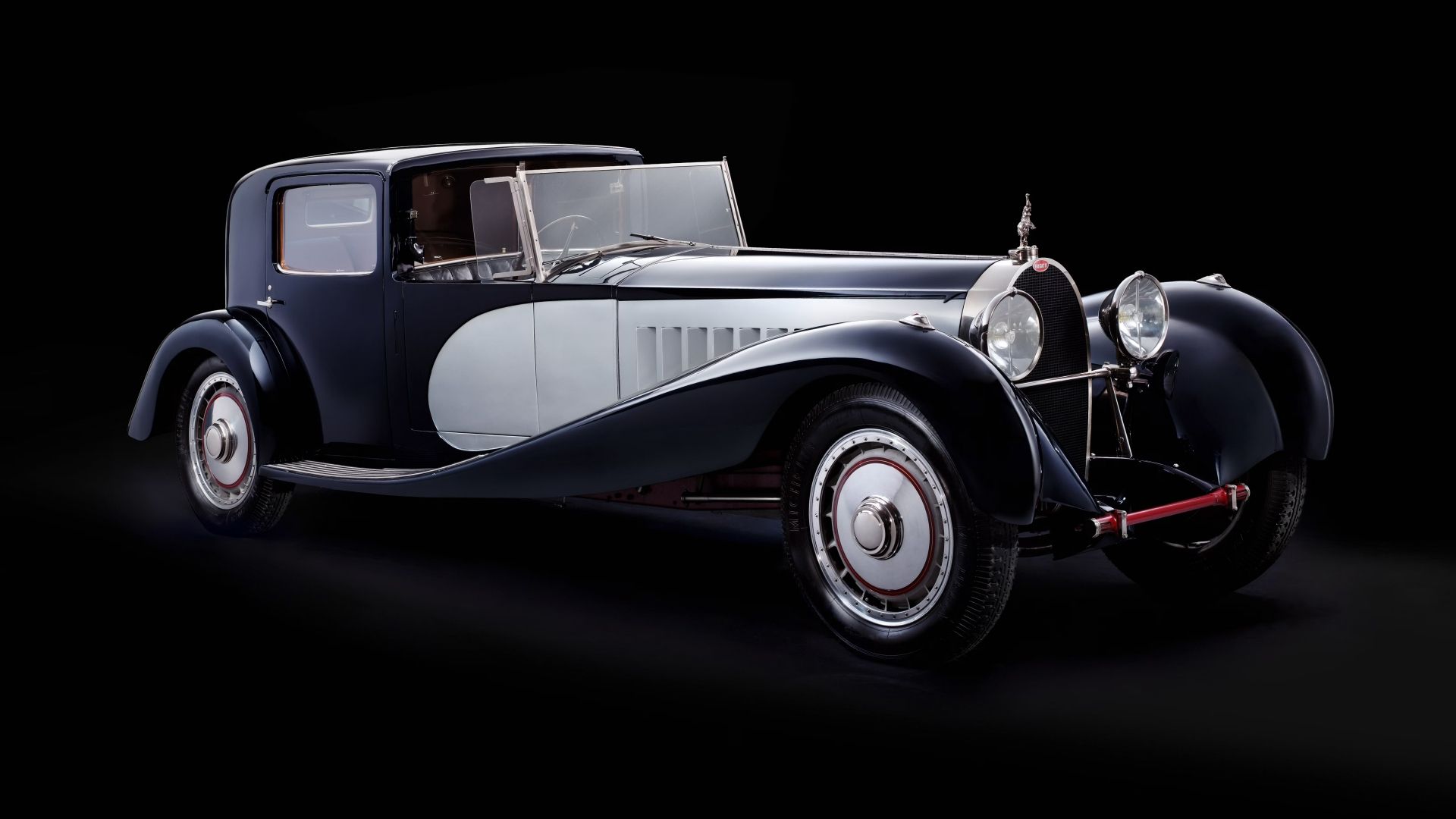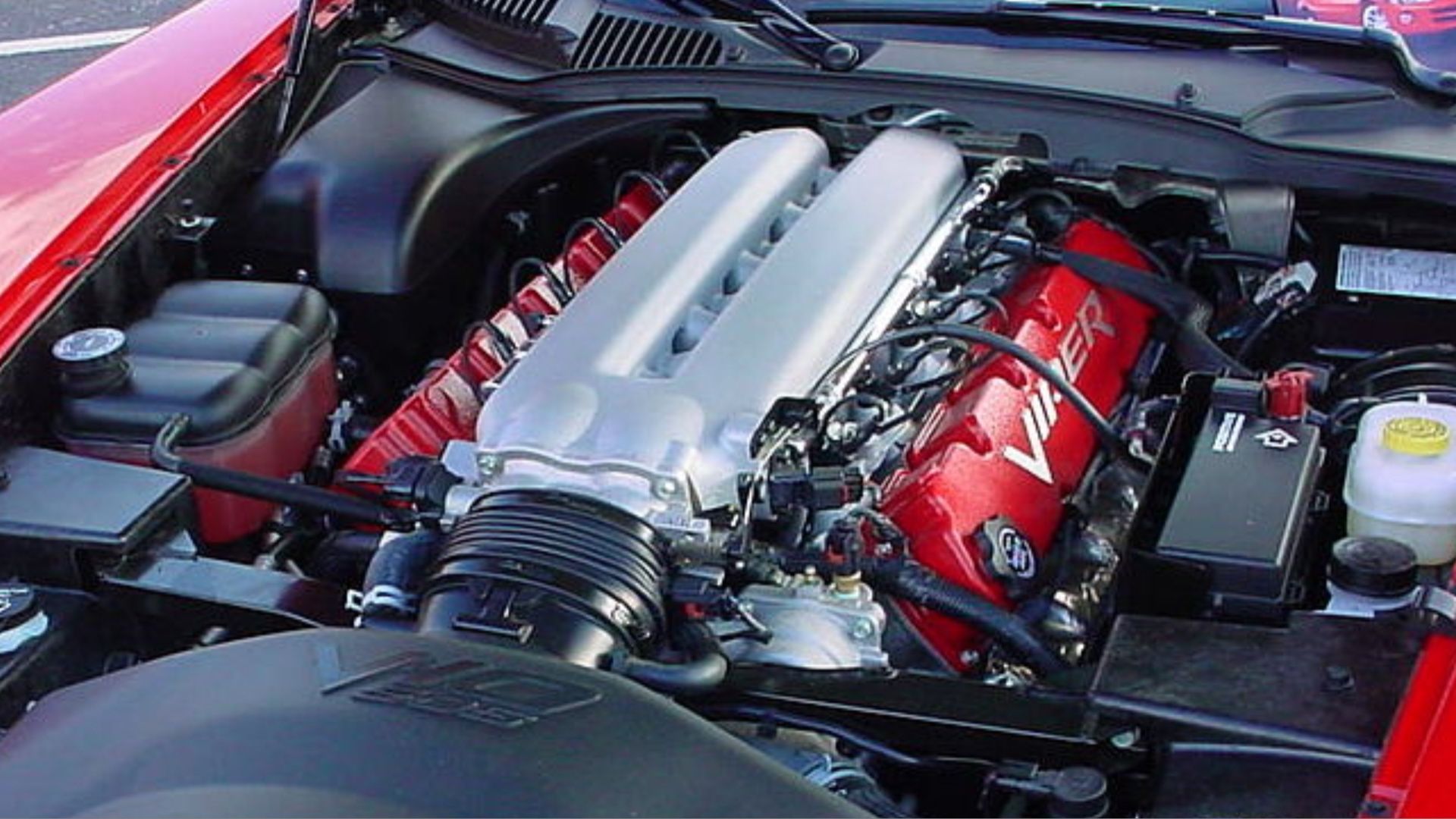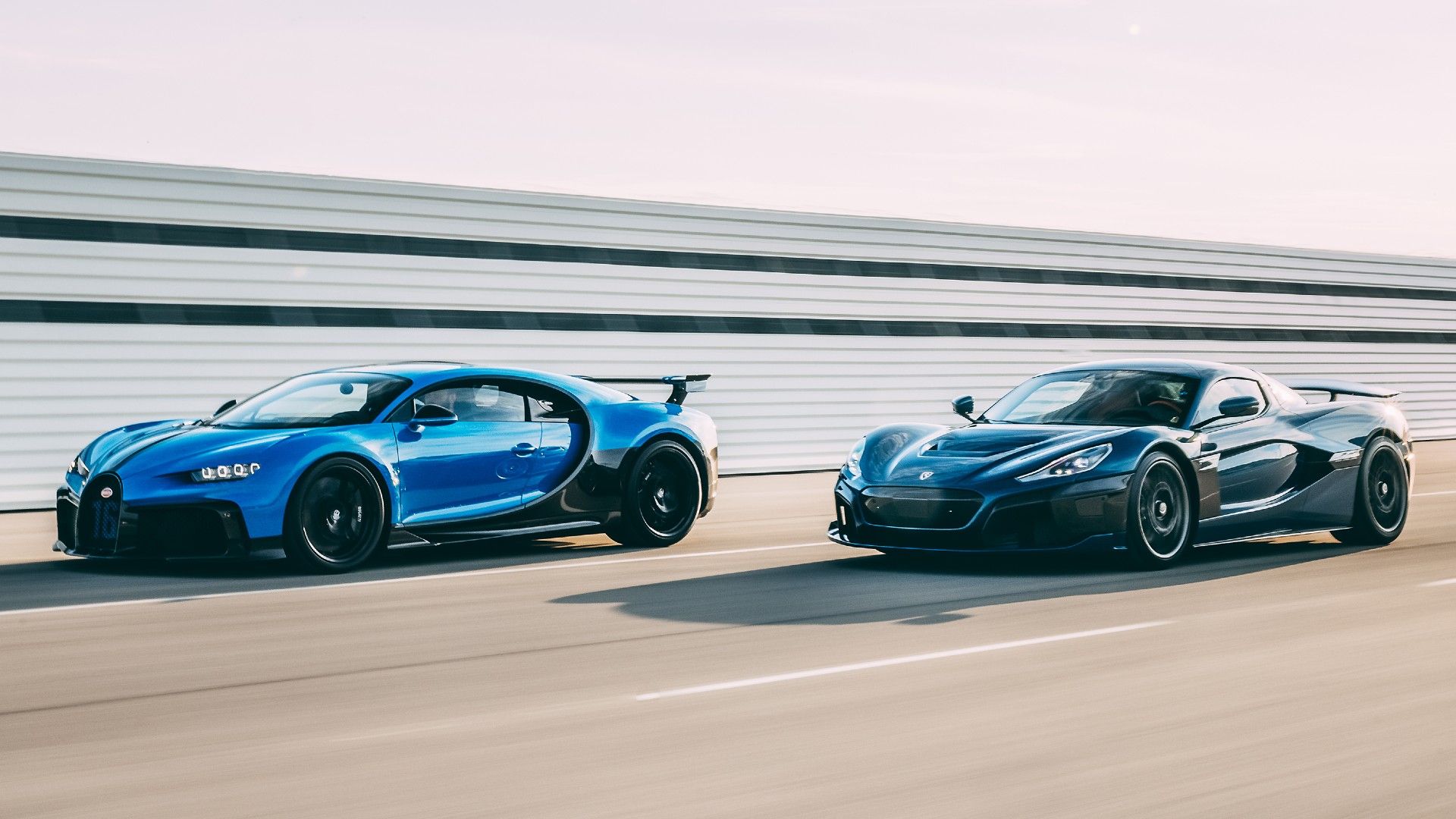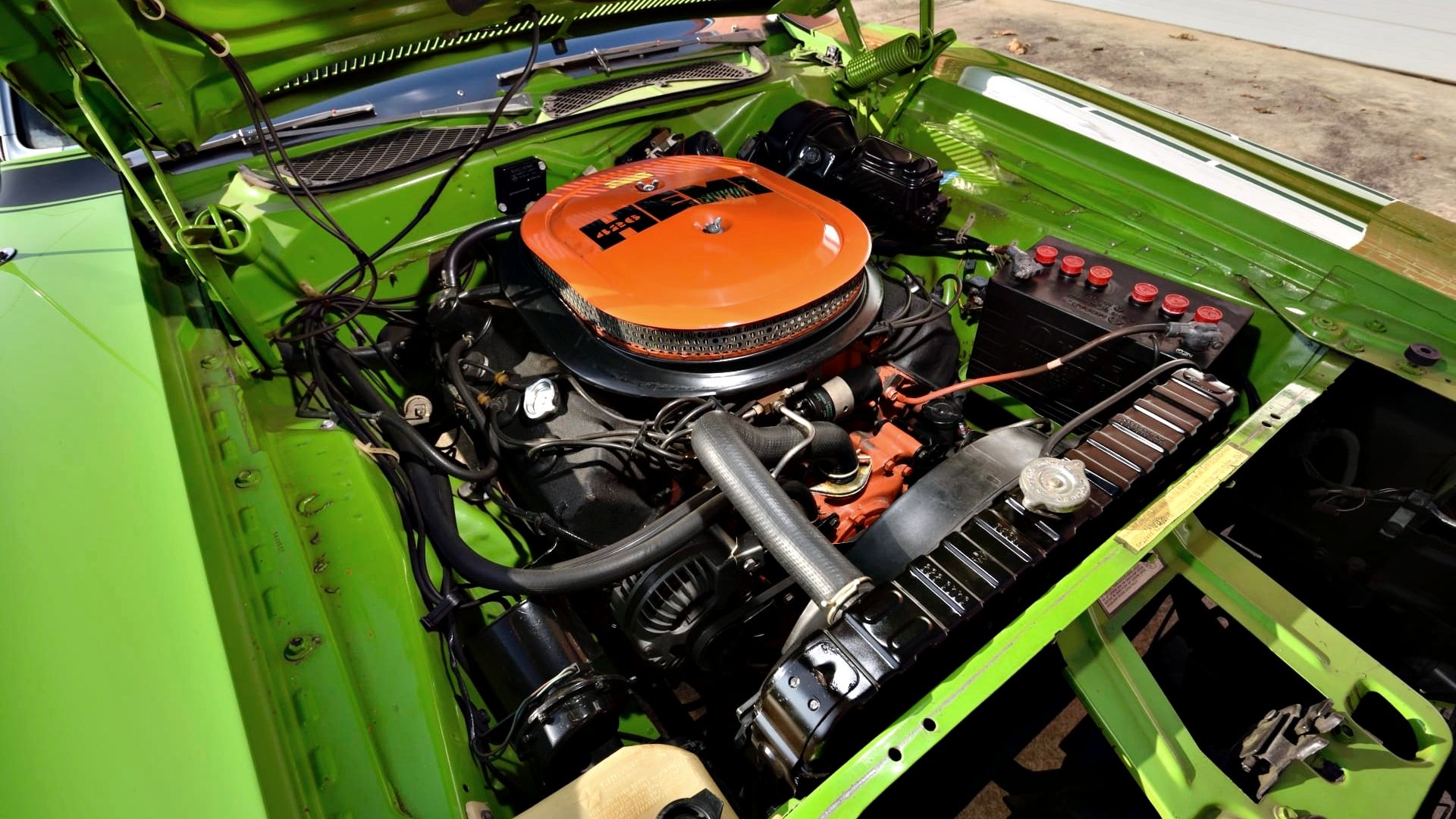Ever since the first car was produced in 1886, the single-engine design has remained the norm throughout the constant progression and innovation made in the automotive industry. For the most part, a car’s engine can be found in the front, middle, or rear, with the layout being chosen to best suit the individual car’s purpose. However, in rare yet spectacular cases, cars have featured two engines instead of one, expectedly in pursuit of finding more power.
Almost every time a car features two engines, it instantly becomes a standout vehicle due to the rarity of the layout, and also due to how ambitious it is. From grand prix racers to rally cars to restomods, the double-engine or twin-engine layout can be configured in a few different ways, such as having two engines strapped together under the hood, or placing one engine in the front and one in the rear. Either layout with these custom cars, presents unique opportunities and of course, some adversity, which is what makes the following ten cars so special.

Production Cars With The Largest Engines
Dive into the world of production cars that came with some of the largest engines by displacement
In order to give you the most up-to-date and accurate information possible, the data used to compile this article was sourced from various manufacturer websites and other authoritative sources, including Car and Driver, and Road and Track. The entries are arranged based on the models’ release years.
10 1932 Ford Delivery “Twice Blown”
One of the Most Menacing Dual-Engine Dragsters of All Time
Technically, the earliest entry to this list of double-engine cars is the 1932 Ford Delivery hot rod dragster, nicknamed “Twice Blown”. Vehicles from this era are massively popular to convert into almighty dragsters, with the Twice Blown Ford Delivery being the prime example of that. Alongside the parachutes and gigantic drag tires, two Keith Black Hemi engines are placed one in front of the other on a custom wheelbase.
Performance Specifications
|
Engine |
Two 572 Cubic-inch Supercharged HEMI Engines |
|
Transmission |
Two-Speed Powerglide Manual |
|
Horsepower |
2500 HP |
|
Torque |
N/A |
|
Driveline |
RWD |
|
0-60 MPH |
N/A |
|
Top Speed |
N/A |
(Specs sourced from various sources)
Combined, the two supercharged 572 cubic-inch HEMI engines produce a mind-blowing 2500 horsepower, with 1250 HP coming from each. As you’d expect, the engines had to be fitted with further modifications to be able to produce this sort of power, including custom pistons, and an Eagle crankshaft with an MSD ignition being used to turn them on. The Ford Delivery Twice Blown is also fitted with a two-speed Powerglide transmission, modified with a valve body.
Most Notable Features
- The Twice Blown Ford Delivery Dragster comes with two 572 CI HEMI engines, producing 1250 horsepower each.
- The two engines are aligned with one in front of the other on a custom lengthened wheelbase.
- The dragster is equipped with a two-speed Powerglide manual transmission.
9 1935 Alfa Romeo Bimotore
One of the First Cars to Feature The ‘Prancing Horse’ Ferrari Badge
Moving to the racecars that opted for two engines was the 1935 Alfa Romeo Bimotore. At the time, Germany was at the forefront of grand prix racing, with no one quite able to compete with what Auto Union and Mercedes-Benz had to offer. To try and bring the Italian brand to glory, Scuderia Ferrari was tasked with discovering a unique solution to the power deficit.
Performance Specifications
|
Engine |
Two 2.9-liter Supercharged Straight-Eight Engines |
|
Transmission |
Three-speed Manual |
|
Horsepower |
540 HP |
|
Torque |
475 LB-FT |
|
Driveline |
RWD |
|
0-60 MPH |
N/A |
|
Top Speed |
199 MPH |
(Specs sourced from various sources)
Enzo Ferrari and his team decided that the best way to make the car faster was not-so-simply to add another engine behind the cockpit. Opting for the most power possible, the Alfa Romeo P3 chassis was modified to fit the supercharged 2.9-liter straight-eight engines. Together, the engines could produce a total of 540 horsepower, with the concept allowing for the Alfa Romeo Bimotore to compete at the front of the field. This car is also said to be the first to use to iconic Ferrari badge.
Most Notable Features
- The two 2.9-liter straight-eight engines allowed for a combined power output of 540 horsepower.
- A full speed, the Bimotore could reach 199 miles per hour.
- It’s one of the first racecars to feature Scuderia Ferrari’s iconic badge.
8 1960 Citroën 2CV Sahara
An Unexpected yet Practical Take on an Iconic Car
With the original base-level 1949 Citroën 2CV only producing a total of 9 horsepower, it may not be a car you’d expect to be transformed into an off-roading explorer. In 1960, Citroën released the 2CV “Sahara”, built for the purpose of oil and exploration throughout Northern Africa (hence the name). To allow the 2CV to handle the desert conditions, the Sahara was equipped with two engines, one in the front and one in the back.
Performance Specifications
|
Engine |
Two 425 CC Engines |
|
Transmission |
Four-Speed Manual |
|
Horsepower |
24 HP |
|
Torque |
17 LB-FT |
|
Driveline |
4WD |
|
0-60 MPH |
N/A |
|
Top Speed |
59 MPH |
(Specs sourced from Hagerty and Automobile Catalog)
The two engines produced 12 horsepower each, resulting in a total output of 24 horsepower. The front engine drove the front wheels with the rear driving the rears turning the 2CV into a 4×4 vehicle. Although still having hardly any power, the lightweight chassis meant that the two engines to stride through the dunes of the Sahara desert. Each engine also had its own fuel tank under the front seats.
Most Notable Features
- The Sahara version of the 2CV was a four-wheel-drive vehicle thanks to its two engines.
- Although only producing 24 horsepower, it doubled the power output for the car compared to the base model.

10 Biggest Engines Ever Put In An American Production Model
In the land where displacement rules, these cars are the kings of American production models with the biggest engines
7 1972 Citroën DS Michelin “Centipede”
A Truly Unique Eleven-Wheeler
Yet another Citroën to apply the dual-engine layout came in 1972, with the DS Michelin “Centipede” perhaps being the most unique entry to this list. Designed specifically as a test vehicle for Michelin to test its new truck tires, the Citroën DS Michelin with fitted with two 5.7-liter Chevrolet V-8s, each producing 250 horsepower.
Performance Specifications
|
Engine |
Two 5.7-liter Chevrolet V-8 Engines |
|
Transmission |
N/A |
|
Horsepower |
500 HP |
|
Torque |
N/A |
|
Driveline |
RWD |
|
0-60 MPH |
N/A |
|
Top Speed |
111 MPH |
(Specs sourced from Michelin)
The main engine in the back of the 7-meter-long car would power the six rear wheels and four front wheels, with the second engine which sat next to the first powering an 11th standalone larger wheel placed in the center of the car, which was used to carry out the high-intensity tire tests the car was designed for.
Most Notable Features
- The Citroën DS Michelin “Centipede” comes with a total of eleven wheels, being one of the most unique test vehicles of all time.
- Despite only being a testing vehicle, the car could produce up to 500 horsepower combined.
6 1987 Volkswagen Pikes Peak Golf
Two Engines in Hopes to Reach the Clouds First
The 1987 Volkswagen Pikes Peak Golf shares a similar reason for using two engines instead of one, that being to beat its competition to be the fastest on the track, or in this Golf’s case, up the Pikes Peak hill climb. In ‘87, Volkswagen was in direct competition with Audi for the Pikes Peak crown, with Audi’s S1 Quattro taking the crown in both ‘85 and ‘86.
Performance Specifications
|
Engine |
Two 1.8-Liter Turbocharged GTI Engines |
|
Transmission |
Hewland F2 Transmission |
|
Horsepower |
650 HP |
|
Torque |
N/A |
|
Driveline |
AWD |
|
0-60 MPH |
2.3 Seconds |
|
Top Speed |
N/A |
(Specs sourced from Top Gear and other sources)
Volkswagen wanted its Pikes Peak contender to look similar to its Mk 2 Golfs on the market, therefore opting for two engines instead of an extreme aero package. Two turbocharged 1.8-liter GTI engines were fitted into the hatchback, with one in the front and one in the rear. The two engines combined for 650 horsepower, but still couldn’t quite manage to take the Pikes Peak crown due to a mechanical failure, despite being on track to win.
Most Notable Features
- The 1987 Volkswagen Pikes Peak Golf had blistering acceleration, reaching 60 MPH in just 2.3 seconds.
- The car was on course to achieve the fastest time up the Pikes Peak trail, but broke down juts several corners before the finish line.
- Volkswagen kept their Pikes Peak contender similar in looks to the MK 2 Golfs in showrooms to attract more customers.
5 2000 Molser TwinStar Cadillac Eldorado
A Wild Iteration of an Already-Bold Cadillac
Created by Molser, the 2000 Molser TwinStar Cadillac Eldorado wasn’t originally intended to be a dual-engine car. Warren Mosler, the founder of Molser Automotive, was attracted to the Cadillac Eldorado due to its mid-engine potential, wanting to turn it into a hot rod. Instead, Molser decided to keep the original Northstar V-8 engine under the hood and place another in the trunk, transforming the Eldorado into a V-16 monster.
Performance Specifications
|
Engine |
Two Northstar V-8 Engines |
|
Transmission |
Two Four-Speed Automatics |
|
Horsepower |
575 HP |
|
Torque |
595 LB-FT |
|
Driveline |
RWD |
|
0-60 MPH |
5 Seconds |
|
Top Speed |
200 MPH |
(Specs sourced from various sources)
Up front, the base 275 horsepower engine is kept under the hood, with a 300 horsepower Northstar engine with ETC being placed in the back of the Eldorado. Due to the rear engine having higher RPM capabilities, the engines would actually shift at different times. With a total horsepower of 575, the Molser TwinStar Eldorado could reach 60 miles per hour in just five seconds with the potential to exceed 200 MPH.
Pros
- The two Northstar engines would shift at different moments, meaning the rear engine would keep driving after the front engine moves up a gear.
- The Molser TwinStar Cadillac Eldorado could reach up to 200 miles per hour.
3:02

20 Most Powerful Production Cars In The World
Gone are the days when supercars only meant big eight- or 16-cylinder engines EVs are now in the mix, and here are the most powerful production cars
4 2000 Mercedes-Benz A38 AMG
Packing a Mighty Punch for a Compact Hatchback
The unique design philosophy of the 2000 Mercedes A38 AMG is what allowed for the compact car to surprisingly fit two engines. The unique design for the floor of the A38 AMG allowed for the front engine to be placed below the driver’s seating position so that the engine would be pushed under the passengers in the case of an accident. The raised platform allowed Mercedes to fit an additional engine at the rear, making the hot hatch a real driving machine and one of the most underrated AMG models.
Performance Specifications
|
Engine |
Two 1.9-Liter Four-Cylinder Engines |
|
Transmission |
Five-Speed Manual |
|
Horsepower |
250 HP |
|
Torque |
265 LB-FT |
|
Driveline |
AWD |
|
0-60 MPH |
5.7 Seconds |
|
Top Speed |
143 MPH |
(Specs sourced from various sources)
Two engines of the same size were used for the 2000 A38 AMG, those being 1.9-liter four-cylinders which combine for a total power output of 250 horsepower. The front engine would always be activated, only driving the front wheels of the car. However, with a flick of a switch, the rear engine would come alive to drive the rear wheels, allowing the A38 AMG to reach 0-60 miles per hour in under six seconds.
Most Notable Features
- The 2000 Mercedes-Benz A38 AMG is incredibly rare, with only four models said to be in existence.
- Due to its small size, the 250 horsepower allowed the hatchback to reach 60 miles per hour in just 5.7 seconds.
3 2001 Hot Wheels Twin Mill
An Iconic Toy Brought to Life
The reason for the Twin Mill’s existence is what makes it one of the coolest entries on this list of dual-engine cars. With the original Hot Wheels toy car being released back in 1969, the Twin Mill would go on to be the company’s first-ever full-size model car over 30 years later in 2001 at the SEMA Autoshow.
Performance Specifications
|
Engine |
Two 8.2-Liter Supercharged Chevrolet Big Block V-8s |
|
Transmission |
Three-Speed Automatic |
|
Horsepower |
1400 HP |
|
Torque |
N/A |
|
Driveline |
RWD |
|
0-60 MPH |
N/A |
|
Top Speed |
N/A |
(Specs sourced from various sources)
The fully-functioning ‘01 Twin Mill featured two massive 8.2-liter supercharged Chevrolet Big Block V-8s, perfectly fitting the Hot Wheels brand image. The two engines combined are said to produce over 1400 horsepower, but unfortunately, the full potential of the full-scale one-off Twin Mill hasn’t been tested.
Most Notable Features
- The 2001 Hot Wheels Twin Mill was the first Hot Wheels car to be made into a full-scale model.
- The car packed a massive punch, producing 1400 horsepower from its giant 8.2-liter HEMI V-8s.
2 2005 Jeep Hurricane Concept
A Display of Jeep’s Future Potential
In 2005, Jeep released their concept off-roader named the Hurricane, to display the future potential for the brand’s off-road division, including the iconic Wrangler. The Hurricane featured plenty of cutting-edge technology to turn heads in the industry as well as the two engines, including independent wheel suspension, allowing each wheel to turn individually.
Performance Specifications
|
Engine |
Two 5.7-Liter HEMI V-8 Engines |
|
Transmission |
Five-Speed Automatic |
|
Horsepower |
660 HP |
|
Torque |
740 LB-FT |
|
Driveline |
4WD |
|
0-60 MPH |
4.9 Seconds |
|
Top Speed |
155 MPH |
(Specs sourced from various sources)
Regarding the engines, two 5.7-liter HEMI V-8 engines produce 330 horsepower each. The engines were mounted both at the front and the rear, becoming another 4×4 vehicle thanks to its two engines like the Citroën 2CV Sahara. Although this was a one-off concept car, the Jeep Hurricane was the perfect display of Jeep’s potential, even if they didn’t necessarily have anything left to prove.
Most Notable Features
- The 2005 Jeep Hurricane Concept could turn its wheels individually, being able to spin 360 degrees while stationary.
- The 660 horsepower makes it one of the most powerful Jeeps ever made.
- The exterior style was an instant hit, taking the stripped-back Wrangler design and modernizing it to a great extent.

The Greatest American V-8 Engines Ever Made
As the ultimate symbol of power, innovation, and heritage, here’s how these mighty American V-8s transformed the automotive landscape forever
1 2007 Audi TT MTM BiMoto
An Unexpected Supercar Killer
The latest model to feature in this list is the heavily modified 2007 Audi TT MTM BiMoto. Motoren Technik Mayer kept the original 1.8-liter turbocharged inline-four base engine in the front of the Audi TT, but added another of the same engine to the rear of the car, tuning them both to increase power. Combined, the total power output for the TT MTM BiMoto was a staggering 740 horsepower.
Performance Specifications
|
Engine |
1.8-Liter Turbocharged Inline-Four Engines |
|
Transmission |
Two Manual Transmissions |
|
Horsepower |
740 HP |
|
Torque |
735 LB-FT |
|
Driveline |
AWD (two gearboxes powering each engine/axle) |
|
0-60 MPH |
3.5 Seconds |
|
Top Speed |
245 MPH |
(Specs sourced from various sources)
The result of the secondary engine was some mind-boggling speed. The TT MTM BiMoto managed to reach 60 miles per hour in just 3.5 seconds with a top speed of 245 miles per hour. At the time, the Bugatti Veyron was at the top of the pecking order, with the idea of an Audi TT being a real competitor making the MTM BiMoto one of the most impressive displays of what dual-engine cars are capable of.
Most Notable Features
- The top speed of the 2007 Audi TT MTM BiMoto worried the likes of Bugatti, with the TT reaching 245 miles per hour.
- The acceleration was also staggering, reaching 60 MPH in 3.5 seconds.





